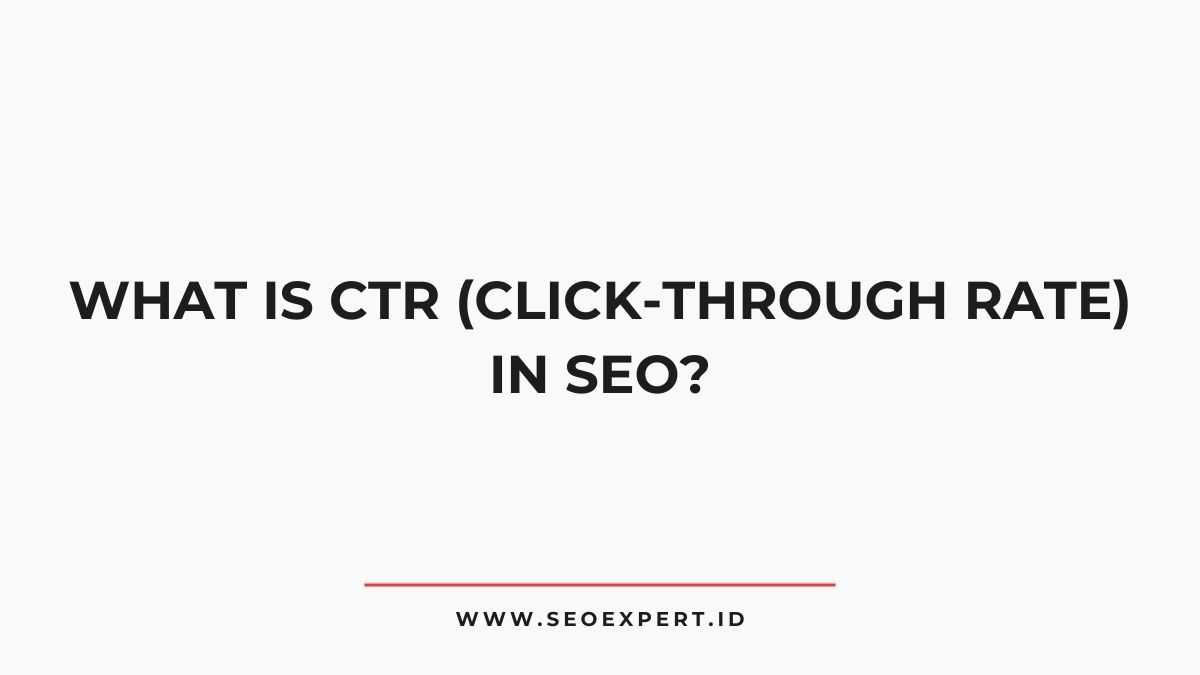Click-Through Rate (CTR) is a crucial SEO metric that measures the percentage of users who click on a link compared to how many times it is displayed.
DigitalOcean
DigitalOcean offers a variety of VPS hosting solutions perfectly suited for anyone seeking straightforward and budget-friendly computing power for their projects.
A higher CTR indicates effective messaging and targeting, suggesting content relevance to both users and search engines.
Factors influencing CTR include title relevance, meta descriptions, and URL structure.
By analyzing CTR data, marketers can implement strategies to enhance engagement and improve conversions. More insights on optimizing CTR are available for those seeking to elevate their SEO performance.
TL;DR
Hide- CTR (Click-Through Rate) measures the ratio of clicks to impressions for a link, indicating user engagement in SEO.
- A higher CTR suggests content relevance and effective targeting, positively influencing organic search rankings.
- Factors affecting CTR include title relevance, quality meta descriptions, and clear URL structures.
- Optimizing CTR enhances site authority and can lead to increased conversion rates.
- Tools like Google Analytics and Search Console provide insights to track and improve CTR in SEO strategies.
Understanding Click-Through Rate (CTR)
Understanding Click-Through Rate (CTR) is fundamental for evaluating the effectiveness of digital marketing strategies, as it quantifies the proportion of users who engage with a specific link compared to the total number of impressions.
A higher CTR indicates that the content resonates well with the audience, suggesting effective targeting and messaging. Conversely, a low CTR may signal the need for strategic adjustments.
Factors influencing CTR include ad copy, visuals, and placement. By analyzing CTR data, marketers can identify trends and optimize campaigns to enhance user engagement.
Factors such as ad copy, visuals, and placement significantly impact CTR, guiding marketers in optimizing campaigns for better user engagement.
Tracking this metric is critical for ensuring that resources are allocated efficiently, ultimately contributing to safer and more effective digital marketing practices.
Importance of CTR in SEO
The significance of Click-Through Rate (CTR) in the domain of SEO cannot be overstated, as it directly impacts organic search rankings and visibility.
A higher CTR indicates to search engines that the content is relevant and valuable to users, which can lead to improved rankings.
- User Engagement: A strong CTR reflects effective engagement strategies, fostering a connection between the content and its audience.
- Quality Signals: Elevated CTR serves as a quality signal to search engines, potentially enhancing overall site authority.
- Conversion Potential: Optimizing CTR contributes to higher conversion rates, making it a vital metric for evaluating marketing effectiveness.
Incorporating CTR analysis into SEO strategies is essential for maximizing online presence in a competitive landscape.
Factors Influencing CTR
Although many elements contribute to Click-Through Rate (CTR), several key factors stand out as particularly influential in shaping user interactions with search engine results.
These factors include title relevance, meta description quality, URL structure, and rich snippets. Each plays an essential role in attracting user attention and driving clicks.
| Factor | Description |
|---|---|
| Title Relevance | Guarantees alignment with user search intent. |
| Meta Description Quality | Provides a compelling summary to entice clicks. |
| URL Structure | A clear, concise URL can enhance user trust. |
| Rich Snippets | Visual enhancements that improve visibility. |
Understanding these factors allows website owners to strategically optimize their content, ultimately increasing CTR and improving search performance while maintaining safety and integrity.
How to Measure CTR Effectively
Measuring Click-Through Rate (CTR) requires the strategic application of various tracking tools that provide accurate insights into user engagement.
By utilizing analytics platforms, one can gather and analyze click data to identify patterns and trends that inform SEO strategies.
This data-driven approach facilitates the optimization of content and enhances overall website performance.
Tools for Tracking CTR
While many website owners recognize the importance of click-through rate (CTR) for evaluating digital marketing performance, selecting the right tools to track this metric effectively is essential for deriving actionable insights.
The right tools not only streamline data collection but also enhance analysis, ensuring that strategies can be adjusted promptly.
- Google Analytics: Offers thorough tracking of traffic sources and user behavior, facilitating a nuanced understanding of CTR.
- Google Search Console: Provides specific data on impressions and clicks for search queries, directly correlating to CTR performance.
- SEMrush: Delivers competitive analysis and keyword tracking, enabling users to benchmark their CTR against industry standards.
Employing these tools can greatly bolster a website’s marketing effectiveness by ensuring data-driven decision-making.
Analyzing Click Data
Understanding click data requires a strategic approach to measurement that goes beyond basic tracking.
Effective analysis involves utilizing advanced analytics tools to segment data based on various parameters such as device type, geographic location, and time of day.
This segmented analysis allows for a more nuanced understanding of user behavior and preferences.
Moreover, calculating CTR should be complemented by evaluating conversion rates to determine the quality of traffic generated. Establishing benchmarks based on industry standards can also provide context for evaluating performance.
Additionally, ongoing A/B testing of headlines and meta descriptions can yield insights into factors influencing click rates.
By implementing these strategies, one can gain an all-encompassing view of CTR’s effectiveness in driving desired outcomes while maintaining a focus on safety and security in data handling.
Strategies to Improve CTR
A considerable number of webmasters seek effective strategies to improve click-through rates (CTR) as an essential metric in search engine optimization (SEO). Enhancing CTR can lead to increased traffic and improved rankings.
Strategic approaches include:
- Crafting Compelling Meta Titles and Descriptions: Ensuring these elements are engaging and relevant can greatly boost user interest.
- Utilizing Rich Snippets: Incorporating structured data to present additional information can make listings more attractive and informative.
- A/B Testing Call-to-Action (CTA) Elements: Experimenting with different CTAs can reveal which variations drive higher engagement.
Implementing these strategies requires a systematic approach, focusing on data analysis and user experience, ultimately contributing to a safer and more effective online presence.
Common Mistakes to Avoid With CTR
Neglecting common pitfalls in CTR optimization can greatly hinder a website’s performance in search engine rankings. One frequent mistake is overlooking the importance of compelling meta descriptions and titles, which can greatly influence click-through rates.
In addition, failing to target the right audience leads to irrelevant traffic, reducing engagement and increasing bounce rates. Overusing keywords in titles may also appear spammy, deterring potential clicks.
Moreover, neglecting A/B testing prevents marketers from identifying effective strategies tailored to their audience. Finally, ignoring mobile optimization can alienate a substantial segment of users, as mobile-friendly pages are essential for maintaining engagement.
Wrapping Up
To summarize, click-through rate (CTR) serves as an essential metric in SEO, reflecting the effectiveness of online content in attracting user engagement.
As search algorithms evolve, understanding the intricacies of CTR becomes increasingly crucial for digital strategists.
Can one truly afford to overlook such a significant indicator of potential website performance?
By implementing targeted strategies and avoiding common pitfalls, organizations can enhance their CTR, ultimately driving more qualified traffic and improving their overall search visibility.








